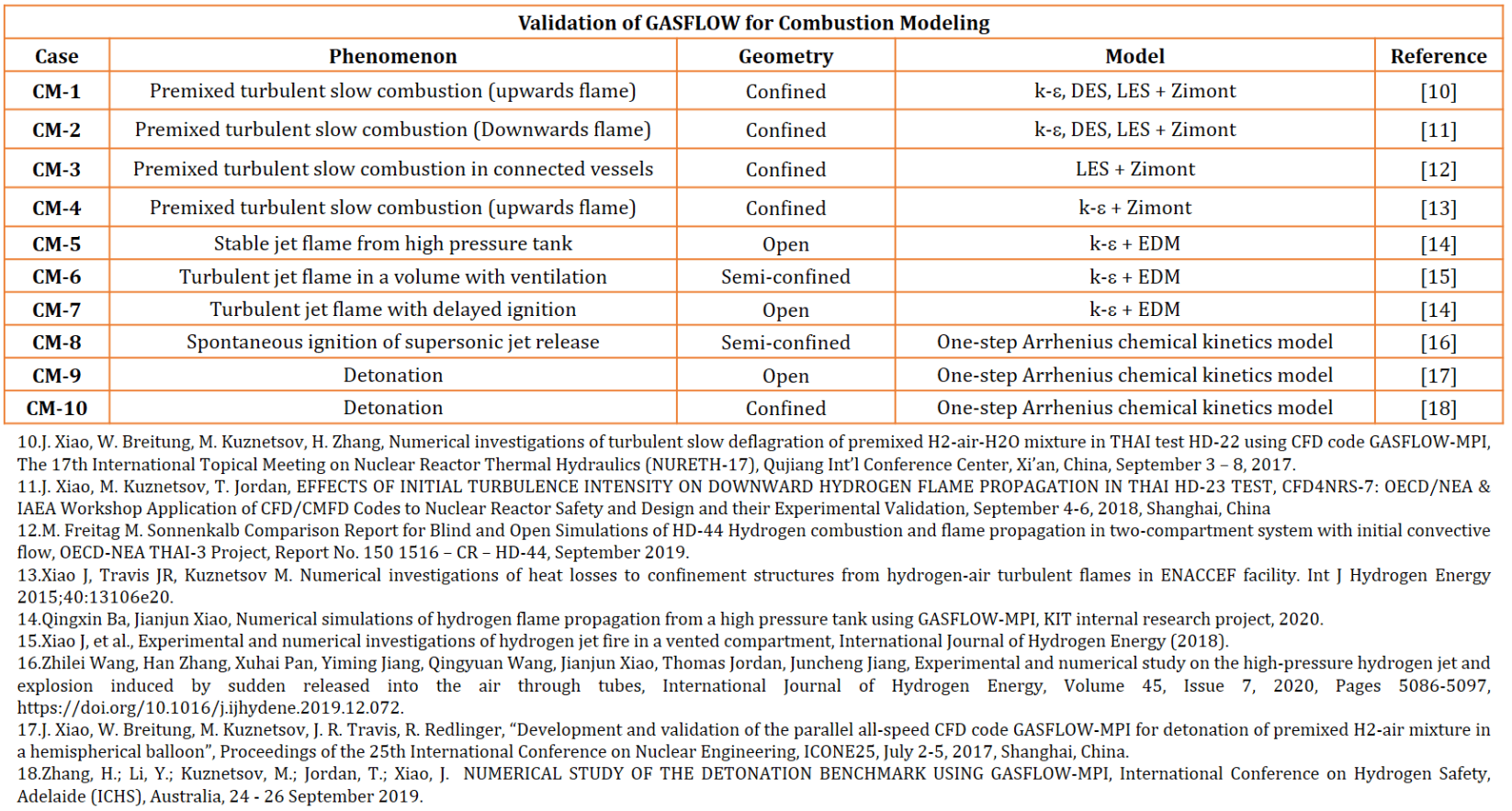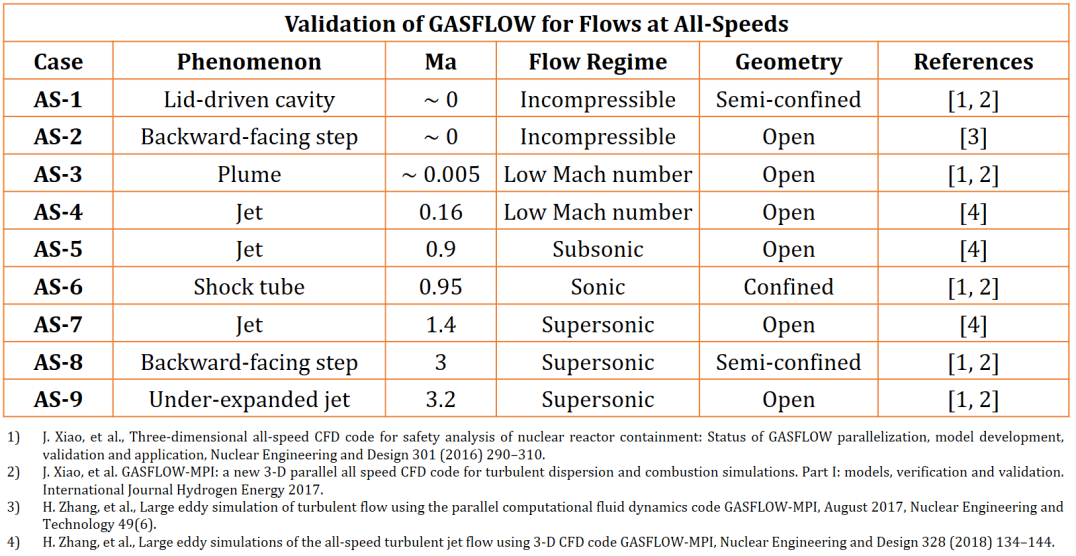
In order to achieve CFD simulations of reactive gas behaviors in large scale industrial facilities, such as release, dispersion and mixing, fire, deflagration and detonation, a high performance CFD code valid for flows at all speeds is highly desired. Pressure-based ICE’d ALE method in GASFLOW employs the operator-splitting technology to avoid the iteration among velocity-pressure-energy. It has been shown that GASFLOW can accurately capture the unsteady characteristics of flows from low Mach number flows to supersonic flows using one solver which shows great advantages in modelling the relevant physical phenomena involved in reactive gas safety analysis.

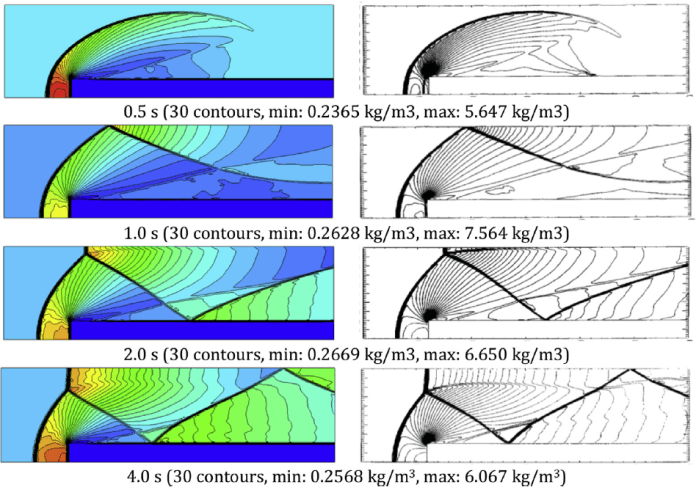
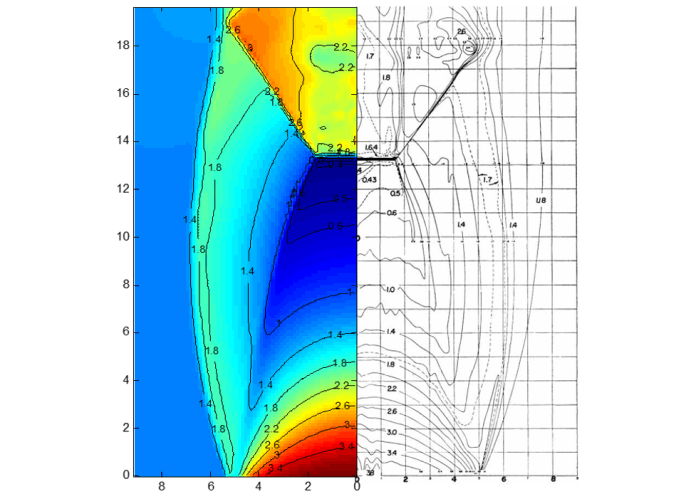
GASFLOW is able to model turbulence with RANS, LES and DNS. RANS-based turbulence models including zero-equation algebraic model and two-equation k-epsilon, k-omega, sst k-omega models are available. Hybrid RANS-LES model, detached eddy simulation (DES), has been also developed and validated in GASFLOW. DES is a modification of RANS model that switches to a sub-grid scale formulation in regions fine enough for LES calculations. The standard Smagorinsky sub-grid scale model is utilized in LES to model the unresolved turbulent behaviors at sub-grid scale. DNS has been also performed to model the flow in tunnel with backward facing step using very fine mesh resolution with GASFLOW. In general, the simulation results are in good agreement with the experimental data. It indicates that GASFLOW-MPI is capable of simulating turbulent flows at wide range of Reynolds number and Mach number regimes.
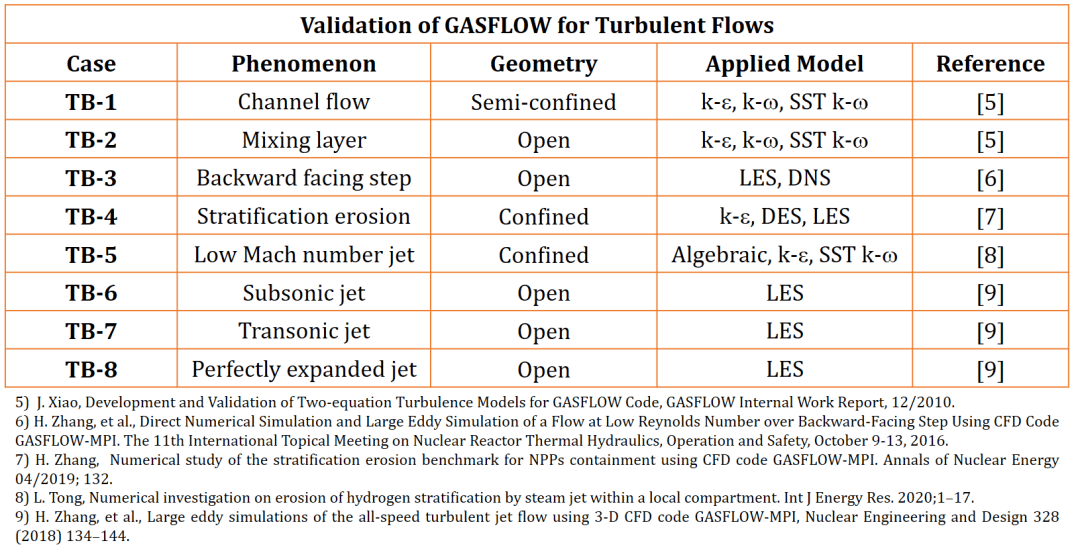
GASFLOW-MPI has various models to simulate combustion dominated by turbulence or chemical kinetics. Testing cases with wide regimes of combustion, including slow deflagration, fast deflagration, jet fire and detonation, have been used to validate the combustion models in GASFLOW-MPI. The testing cases include the experiments carried out in confined space, semi-confined space and open space. In general, good agreement have been obtained between the calculation results and the available data. It indicates that broad combustion regimes occurring in various geometries can be reliably predicted using the combustion models and the unified N-S solver in GASFLOW-MPI.
